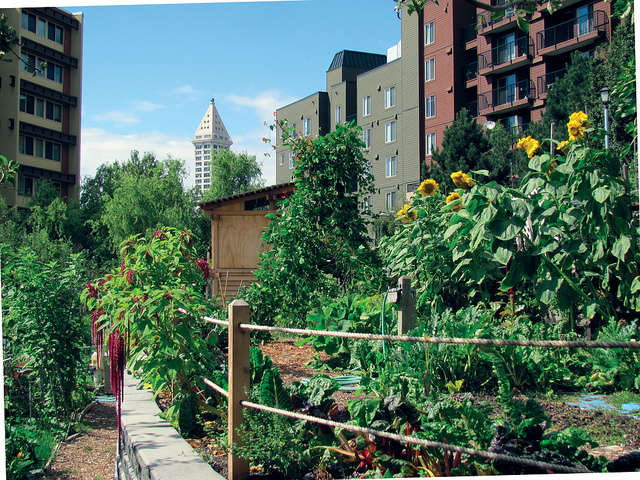Some Known Details About City Blooming
Some Known Details About City Blooming
Blog Article
City Blooming Can Be Fun For Anyone
Table of ContentsFacts About City Blooming RevealedNot known Facts About City BloomingCity Blooming Things To Know Before You BuyThe 5-Second Trick For City BloomingCity Blooming Fundamentals Explained
Intrigued in expanding food for sale in the City of Chicago? Below is a listing of frequently asked inquiries relating to the regulations and regulations that farmers should think about when intending a city farming task.
The zoning amendment does not modify any various other codes managing composting, building authorizations, buying or leasing City had property, business licenses or environmental contamination. There are existing codes that manage these concerns and they continue to be completely result and may be relevant to your project. Community gardens are typically possessed or handled by public entities, public organizations or community-based organizations and kept by volunteers.
Urban farms expand food that is meant to be sold, either on a not-for-profit or for-profit basis. Due to their industrial purpose, city farms need a company license. Yes. A community garden is allowed to offer surplus generate that was expanded on website if the sales are accessory or secondary to the yard's key function explained over.
City Blooming Things To Know Before You Get This
The amount of compost material can not surpass 25 cubic backyards at any kind of provided time according to the criteria in 7-28-715 of the City's Municipal Code. Because the dirt at a lot of new yard websites requires changing, compost, soil, wood chips, or various other products can be obtained to create or enhance the expanding space.

If a structure authorization is called for after that the hoophouse will certainly be considered an accessory building. You can locate out even more concerning the structure license requirements by getting in touch with the Division of Buildings. The 25,000-square-foot dimension limit is intended to avoid a solitary neighborhood garden from controling a provided block or detracting from the block's existing household or industrial character.
The restriction does not put on gardens found in Public Open Space (POS) districts. Can there be more than one area yard that is 25,000 square feet on a solitary block? Yes. The dimension restriction relates to individual gardens, not to individual blocks. No. Fencing is not called for, however, gardens that have big parking lot may be required to mount fence or other landscape design functions.
The Basic Principles Of City Blooming
B1 & B2 areas require that all industrial usage tasks be conducted inside. R districts restrict business activity. The guidelines show the purpose and intent of the Zoning Code. Is fencing required for city ranches? Yes. Fencings may be needed, in addition to landscaping and screening, for particular parking locations and outside job or storage space areas depending on location and the specific activity occurring.
Yes. Urban ranches need structure licenses and zoning authorizations prior to building. Other types of city evaluation may be called for depending on details structures, tasks, dimension, landscape design, licensing, public heath and stormwater management issues. Many of these demands are determined in the project layout or allowing process, however, the candidate might be liable to independently determine specific licenses or permits that may be needed.
The Division of Service Affairs and Customer Defense can help figure out the particular type of service license that's needed. Off road car parking is needed for a lot of commercial tasks in Chicago. The required number of auto parking spaces is based on the number of workers working on site and not the square video footage of the growing room.
The City Blooming PDFs

An urban farm can offer garden compost material generated on site, nevertheless, the procedure should comply with the regulations in 7-28-715 of the Chicago Municipal Code. Aquaponic systems are allowed inside your home on metropolitan ranches in many zoning areas.
Up to five hives or swarms of honey bees might be kept as an accessory use. However, beekeepers must sign up with the Illinois Division of Farming. For additional information regarding the suggested zoning modification you may contact the Department of Real Estate and Economic Development, Bureau of Planning and Zoning at 312.744.8563.
Farming in cities and urban locations An urban farm in Chicago. Urban agriculture refers to numerous practices of growing. https://city-blooming-46604195.hubspotpagebuilder.com/blog/city-gardening-cultivating-green-spaces-in-urban-areas, processing, and distributing food in metropolitan areas. The term additionally relates to the area activities of pet husbandry, aquaculture, beekeeping, and horticulture in an urban context. Urban farming is distinguished from peri-urban agriculture, which occurs in backwoods beside residential areas.
The Single Strategy To Use For City Blooming
It can involve a motion of natural cultivators, "foodies" and "locavores", who seek to form socials media based on a common ethos of nature and neighborhood holism. These networks can develop by way of official institutional assistance, becoming incorporated right into local town planning as a "change community" motion for lasting city development.
In either case, the a lot more direct access to fresh veggie, fruit, and meat products that might be realised via city agriculture can enhance food safety and security and food security while lowering food miles, bring about reduced greenhouse gas emissions, thus adding to climate modification reduction. A few of the very first proof of city agriculture comes from Mesopotamia.
Report this page